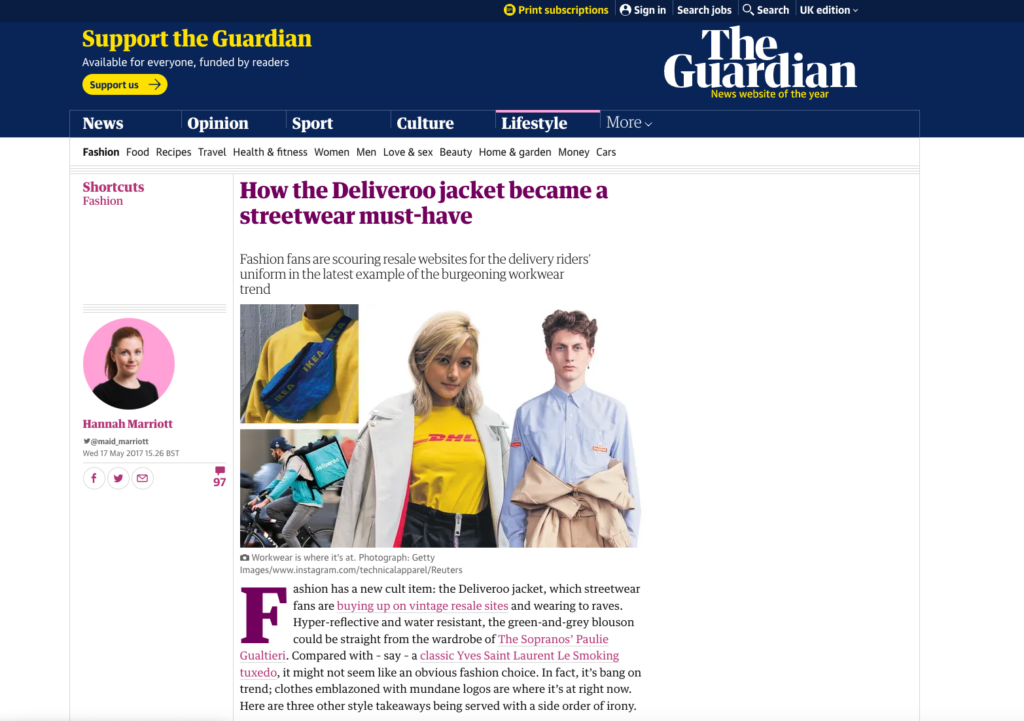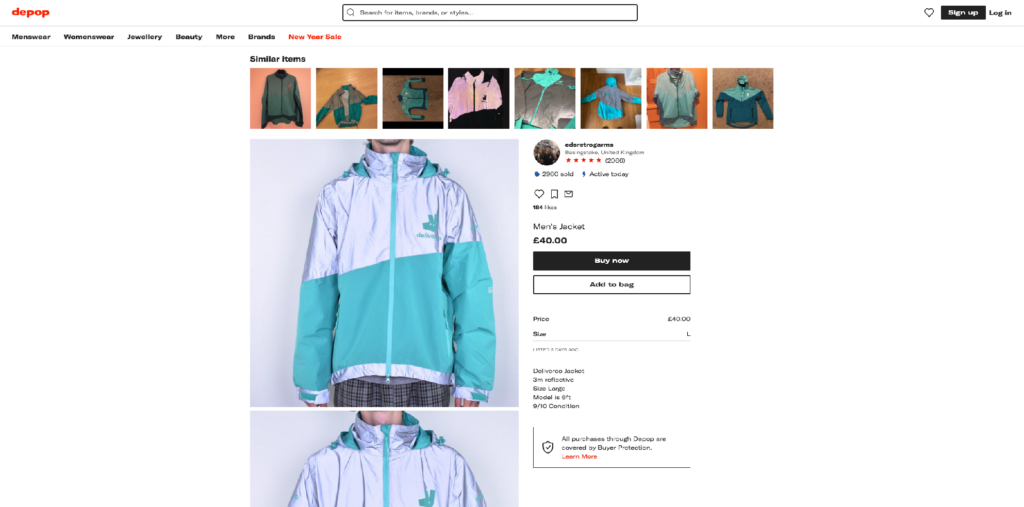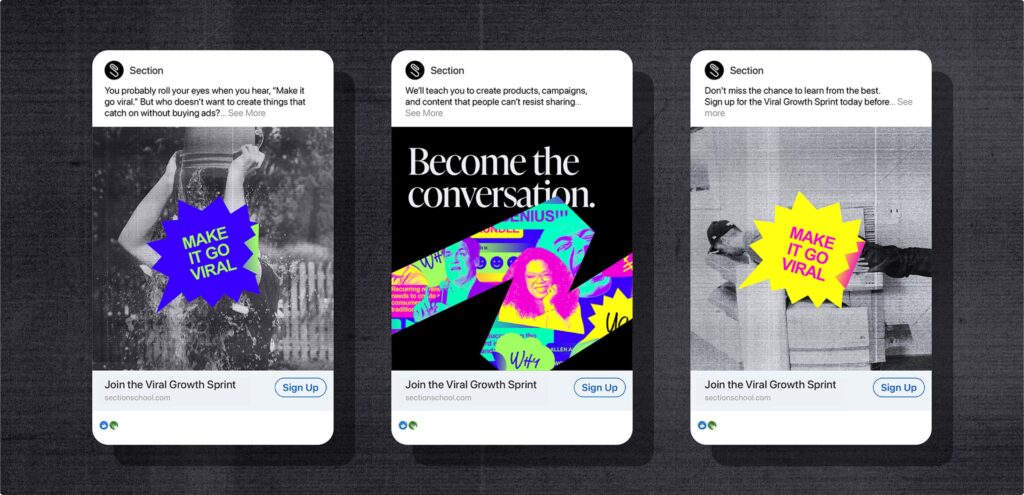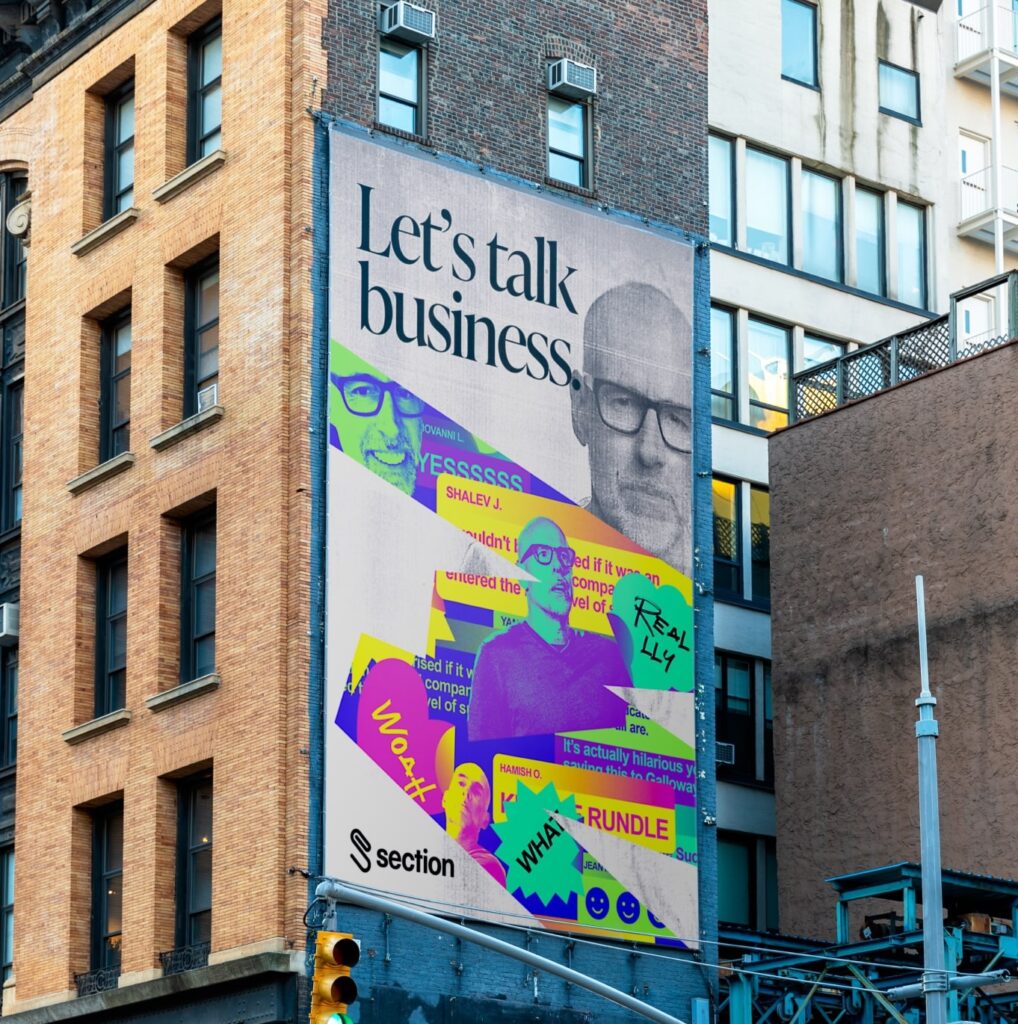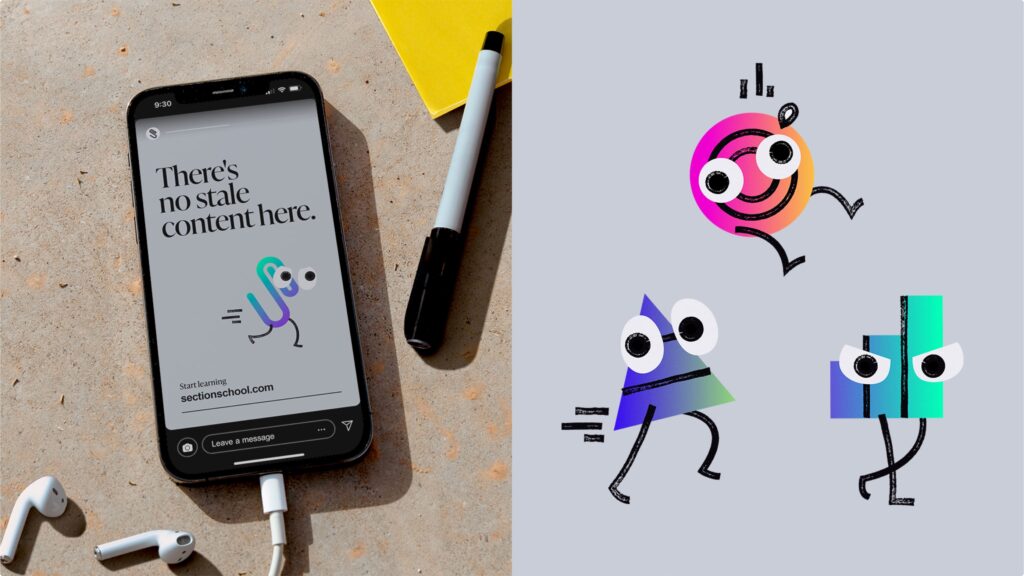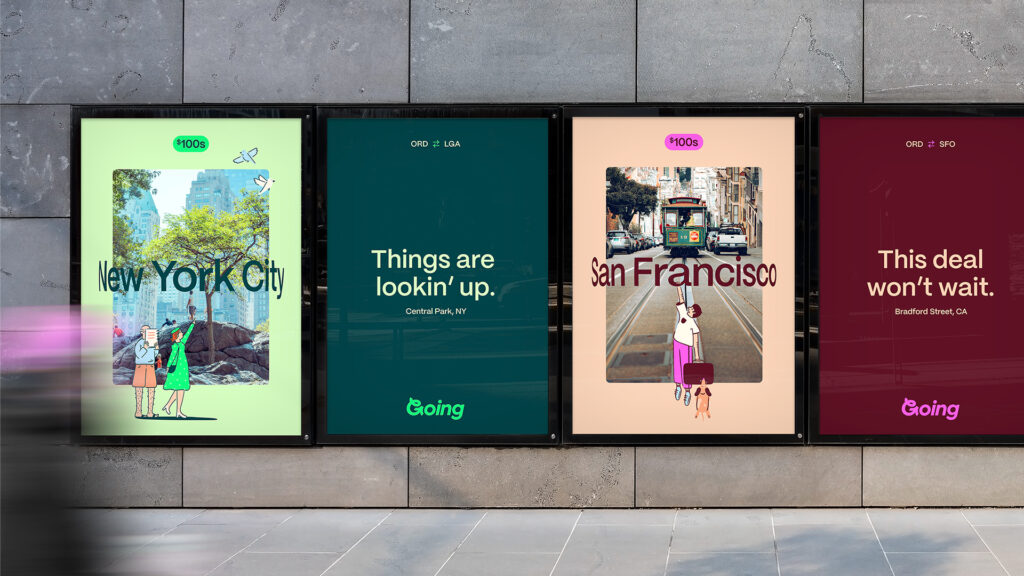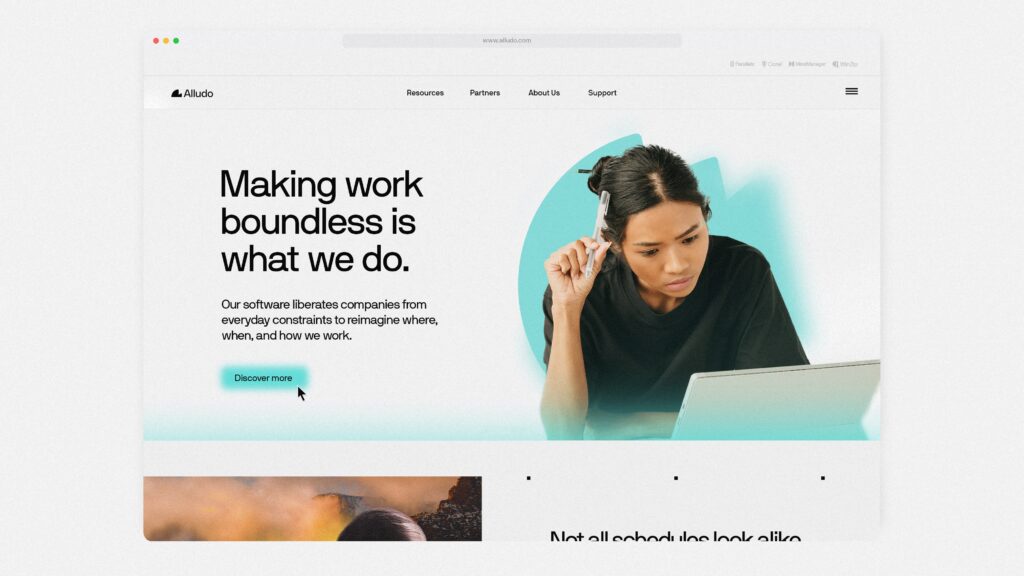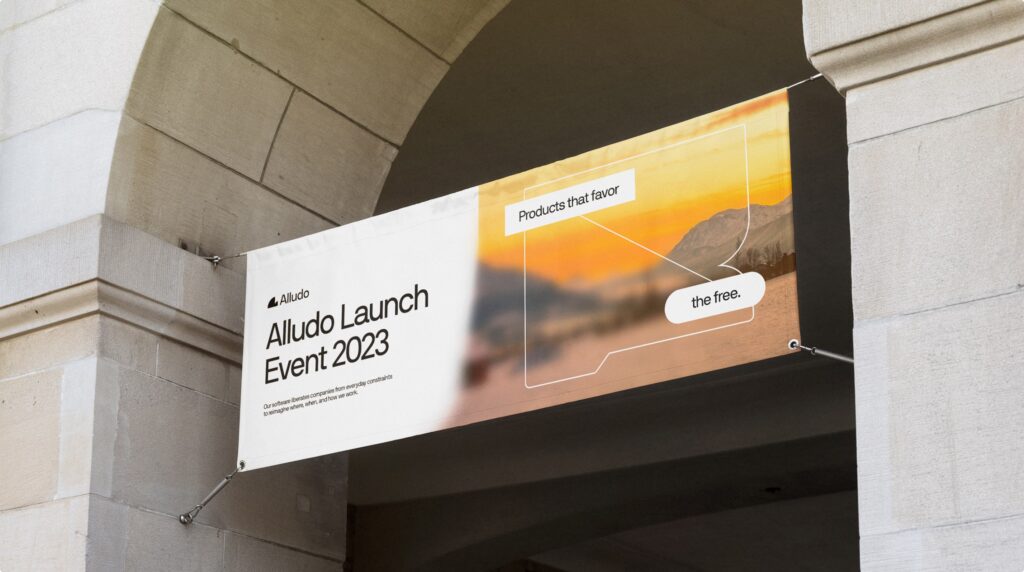Table of Contents:
Profile | BACKGROUND | PROCESS | COLLABORATION | EVALUATION
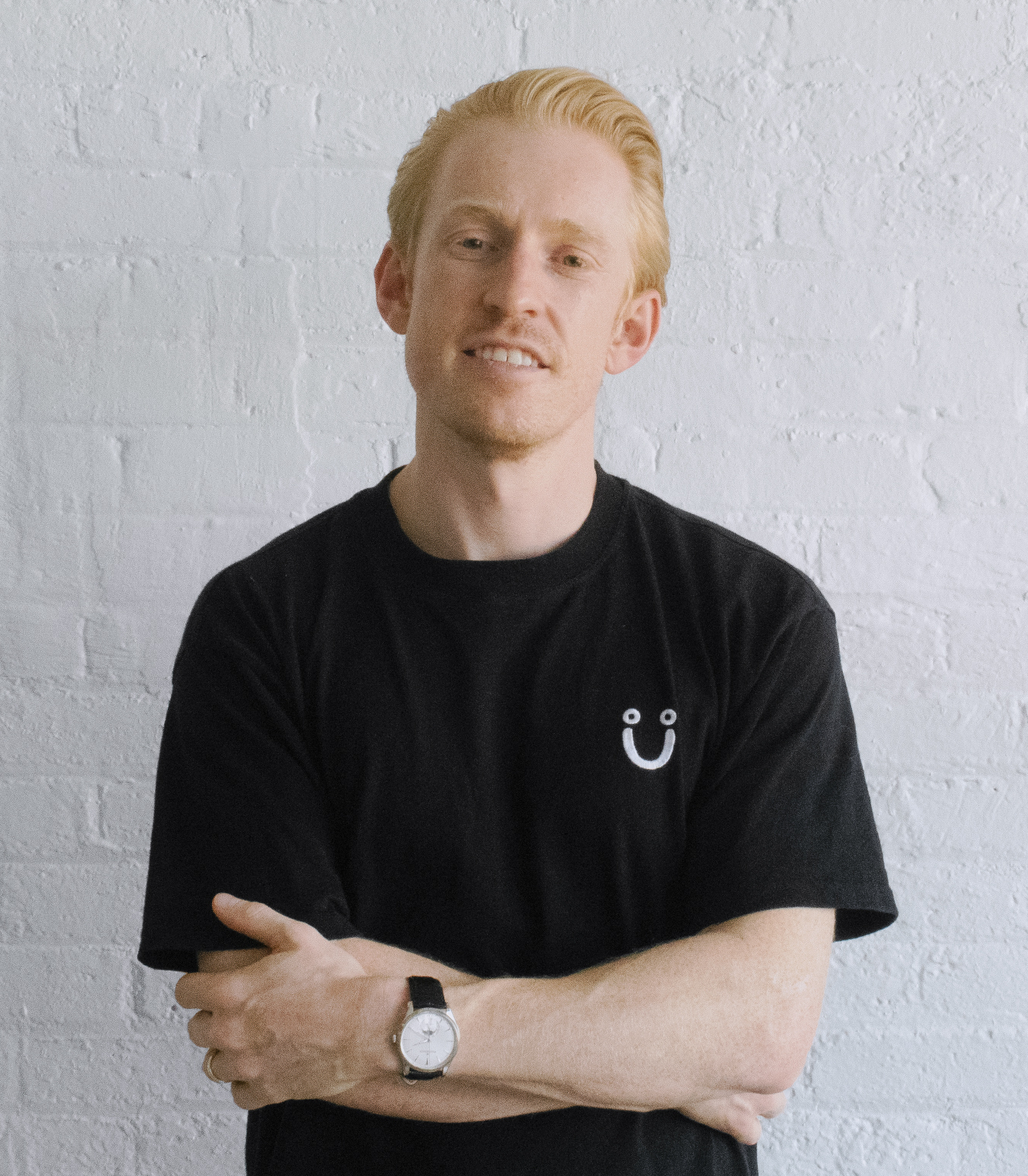
NAME: RIChARD SWAIN
COMPANY: DESIGNSTUDIO
TITLE: PRINCIPAL, AMERICAS
FROM:WALES, UK
CURRENTLY LOCATED: NEW YORK
SPECIALTY OR AREA OF INTEREST: BRAND STRATEGY
SITE: www.
“Not everyone knows how to work with an agency, I don't think that's always acknowledged by a client. Having someone on that side that knows how to get the best to have an agency… It's like any other relationship, you've got a responsibility, and not just a one way responsibility, to the project.”
Adam Estabrook: Hi Rich. Could you tell me about your background prior to branding, and what brought you to strategy?
Richard Swain: I studied liberal arts at university. In part, because growing up in the UK there’s quite a push toward the humanities and there’s not such a focus on going into something that immediately transitions into a career. So I studied History and American Studies, without a particular field in mind, but more just to further my education.
During that time I became interested in advertising and communications and I ended up getting these short internships in London, for M&C Saatchi and others. Actually, I would barely call them internships. More like tagalongs. I couldn’t add much value... I remember getting a campaign brief for the London Underground and redrawing the logos of the London Underground for concepts. Imagine that! Somehow off the back of those, I got a brand-side internship with Toyota. But, then I didn't end up getting a job in marketing or advertising as it was 2008, immediately following the global financial crisis, so most hiring was limited.
In the end I took a sales job just to get me to London and, in 2010, ended up moving to Australia. One of my colleagues had recently relocated there and was looking for people to come over with him to help grow the business. I was already thinking about taking time off and traveling so I said yes. They gave me a visa and off I went.
It was there that I met the then managing director of Landor in Sydney, Nick Foley, who agreed to take a punt on me. Luckily for me, he’d just had a group of employees that hadn't worked out. Apparently they had looked great on paper but they just didn't fit culturally. He saw my enthusiasm and energy and I can only assume thought: ‘What the hell? It can’t get any worse”.
He said, “How about this, Rich? You've been doing a lot of sales and marketing. Why don't you come on board and do half new business and half strategy. You'll report half time into the head of strategy and half time into me on the new business side. We'll do it for a year, and then, after the year, you can decide which pathway you want to go.”
While there, I was fortunate enough to accompany him, and the then ECD, Mike Staniford, to all of the pitches they went to. I was like a sponge. It gave me a chance to understand the language and how things worked. I would say to people that when they're starting out in the industry, there's no better way to get a handle on things. Of course, you get a lot from the depth of working on projects. But, if you can get exposure to new business early, you’ll get to see the breadth of briefs that come through the door, the different types of client approaches and dynamics. You then start to detect patterns, and realize that there's actually only 6 or 7 types of major brand challenges that clients’ face.
Tell me more about the craft of strategy versus relationships and working with clients. Tell me, what does your average strategy project look like?
I would say it's about aligning on intent, or defining the intent around a brand and a brand’s experience. But, sometimes it can be as small as just getting to the right brief.
I don't think that’s an isolated job. It’s not as if the strategist goes off and just does the work. I think it has to be an incredibly collaborative process working alongside other people. If there’s a creative output, you need that creative team supporting and helping facilitate the project. On the client side, there’s identifying the decisions that need to be made and then making them.
I think some of the best projects I've seen are not because the wrong decision was made, it was because no decision was made. One of the jobs of a strategist is just identifying the questions that need asking, then determining how we facilitate the answer. Sometimes, we may have a really strong recommendation and provide the answer, but often it might just be ensuring that we have an answer and clarity going into the creative output.
Currently, there are a tremendous number of people who want to own the term strategy. In my mind, it’s a big umbrella for people to be under. So my question is, how do we define strategy and what does it look like?
A key distinction is the difference between being strategic and the delivery of strategy as an output. Because, I think as you get more senior, we all get broadly better at what we do. We become more creative, or better with clients. Ideally, you're becoming more well rounded as you grow.
The second thing is interesting, the word strategy is so contextual. I remember when I moved from Landor to Huge. Previously I had been in strategy, and obviously it was brand strategy because it was a brand agency. When I moved to Huge there were so many different flavors of strategy. Product strategy, content strategy, marketing strategy… As a brand strategist it became important to feel that out.
I remember going to an AIGA talk a year or so ago around this topic, and Base partner, Mina Lew said “the role of the strategist is like being the lawyer I bring to court to defend my work. Sometimes I don't need a lawyer, because it's a simple case and I can write them myself. But for the more gnarly, complex environments… then, I feel really good having my lawyer along with me.” I like that as a metaphor, and it reminds me that the role isn't just at the beginning, but all the way through as a partnership.
DELIVEROO JACKET - RICHARD SWAIN, DESIGNSTUDIO
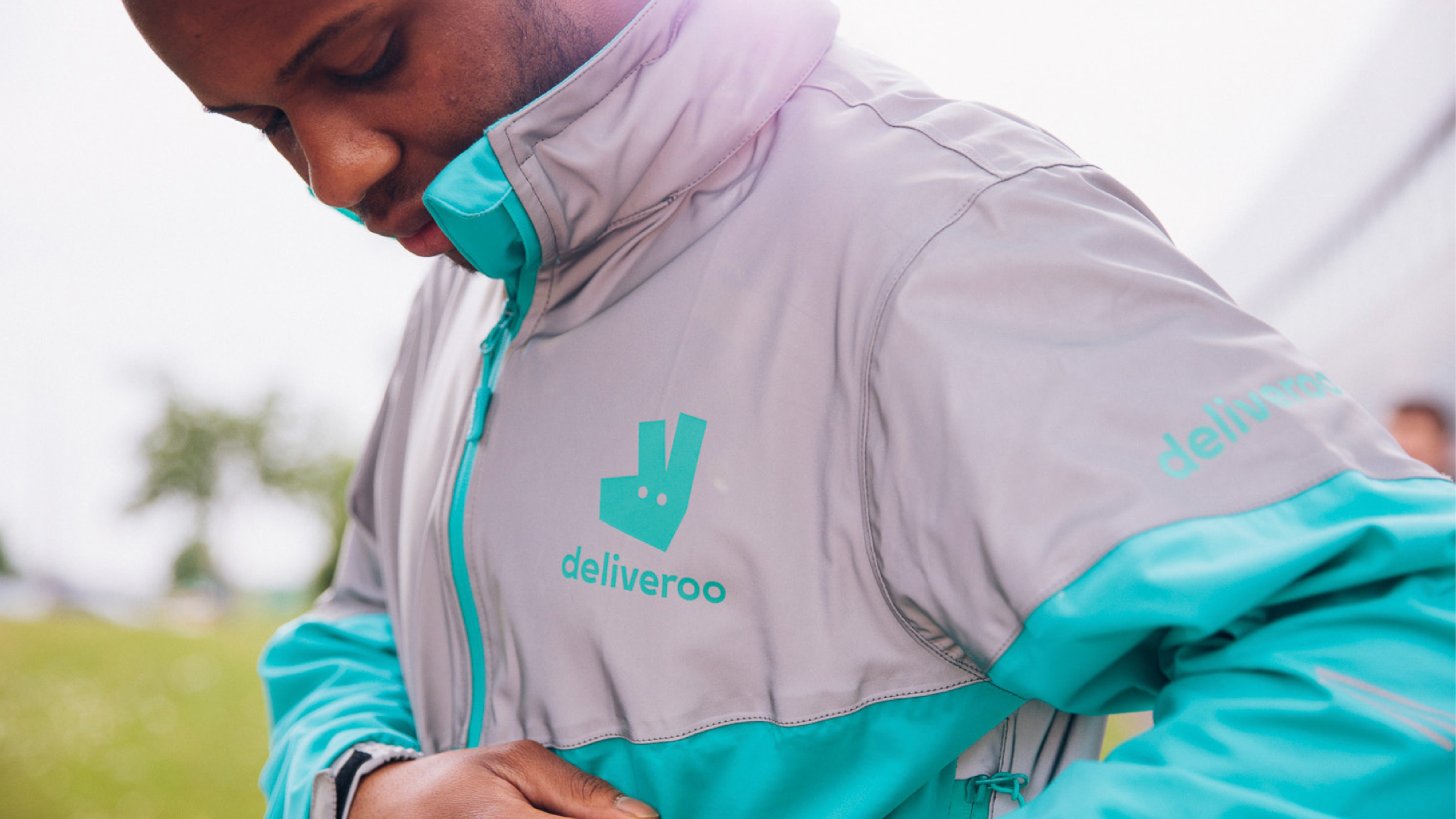
“Some of the worst projects I've seen are not because the wrong decision was made, it was because no decision was made.”
Could you share with me what the ideal client brief looks like?
An ideal brief is honestly just a timeframe and intentionality. Those things are more important than any physical inputs. We can figure out the rest though working together. That’s the fun part!
There are, of course, moments when a tight brief is great, because then it makes the job easier. Especially if we've got a short timeline to get to creative deliverables. Brilliant, a brand strategy that makes sense, that’s clear and has focus. We have an audience, maybe a message. We know what we stand for. Then, my job as a strategist is distilling that into a succinct creative brief.
Once you’ve made contact with your client and you've started the project, when do you bring creative into the process?
From day one. At DesignStudio (part of Further), it's built into the business model. Projects are led by creative directors, all of whom are very strategic in their own right but who are then supported with strategy leads. It creates a sense of structure on projects.
The reason is, the strategy will be better if they're not in isolation. Everyone needs a partner and people to work with, but also the benefit of designers and creatives being in on the process. They will see things that the strategists wouldn’t. And, they will learn about the environment the brand needs to thrive in, the touch points they concept against, or the client’s capability to actually execute on them.
For example, when we rebranded Deliveroo our designers rode on the back on bikes with delivery riders, and it was through this experience that they learned how important safety was. When it came to concepting the identity we came up with the idea of partnering with road safety organization, Brake, to design new jackets, which is precisely what we did. They also looked pretty sweet and ended up getting named a ‘streetwear must’ by the Guardian.
For a recent project with Rho, a neo-bank based here in NYC, we discovered that their marketing team was incredibly small but they were responsible for producing a high volume of assets. We recommended building an asset generator tool for their team so that they could easily produce and manipulate assets based on the pattern system we created for them.
SECTION SCHOOL - RICHARD SWAIN, DESIGNSTUDIO
Do you think that a high degree of collaboration is required for a successful project? Or can you foresee an entirely different team model working more effectively?
Maybe I'm drinking the Kool-aid, but at DesignStudio we talk a lot about radical collaboration. It's something we live and die by.
It means being incredibly collaborative across our team, but also with the client. We don't go away and come back and here's the answer weeks in. Instead, it’s all incredibly high-touch. We often do week-long immersions on site with our clients and have open boards where we're sharing live files. We give them files to test while we're developing them. It really is incredibly collaborative
This runs throughout the organization, too. We might have a core team but then also an extended team since these are often people who are charged with delivering the experience that will ultimately shape the perception of the brand. We try to engage them throughout the process. In the past we’ve created private instagram channels where we’ve documented the process of all employees to see. For Penguin Random House, we set up a temporary booth in their office where employees could ask questions. Way back when, we built an entire room at AirBnb’s HQ so employees could check in on the progress.
The other component of that is collaborating with their communities and making sure we're getting input and taking them along the journey. For Going (formally Scott’s Cheap Flights), we brought a select group of super-fans into the decision that we were looking to change the name, and used them as a sounding board for names but also used them to test the messaging around the communication of it. This feels like a departure from the past where we used to be a lot more secretive about brand changes. Today, everything feels a lot more open.
That’s great! Tell me a bit more about radical collaboration. Is that a concept that was new to you coming into DesignStudio, or is it something you've seen elsewhere?
I think it's a shift in shift from how agencies were working. When I was at Huge, I was fortunate to report into Judith Huginboom for a short time. She had been an SY/Partners and had a lot of deep collaboration skills. She said to me, “You should look at them and their work with IBM and others. Their processes are built around collaboration with leadership teams and getting them to develop strategic frameworks for business.”
Then, when I started interviewing with DesignStudio, I saw how they were working during COVID, taking these immersive in-person sessions that they were famous for and adapting them for virtual environments. They were designing these incredible worlds, almost game-like experiences that they were using to facilitate discussions and evaluate new potential futures together.
They’re incredibly strategic sessions, but they are also very creative because they are designed to be far away from your day-to-day. That it allows you to suspend belief and start imagining other possibilities. It was phenomenal, and for me, it was the best of all worlds. Looking back, I think that was the momentI knew I wanted to join DesignStudio
It sounds like radical collaboration is not just something that happens internally, but it also is about the collaboration with clients and through having a lot of communication. When you’re working with clients, is that acknowledged at the beginning of the project?
Absolutely. We're not the cheapest agency and there’s a reason for that. It’s not just the quality of our output, it’s the level of high-touch engagement that goes into getting there . From our first meeting with a new prospect, we explain our process, why we do it, and because of the high touch nature of our process, the time it takes And we say right then and there, if this doesn’t sound right for you then let’s go no further.
Do you think the radical collaboration approach could be exported to other companies? Could you envision it being a working model for other studios of a larger size or different focus?
Yes, I think so. It just comes down to what your philosophy is and your degree of humbleness. I think many times it’s ego that gets in the way. Some people think they know best and want to always push their ideas first. The same can be true of clients. In my experience, what leads to the best work is a mutual respect and understanding, and a desire to drive the best outcomes together. Not being precious about where initial ideas come from, just that you execute on the best ones.
I’m not going to name names but I’m sure we can all think of those firms where the creative agency brings an idea and insists on driving it through no matter the counter-viewpoints. We’re just not like that. We want incredible strategic and creative outputs but we know that when we’re entering into a new relationship it’s a partnership and that means creating something that both parties — and their communities — can believe in.
GOING - RICHARD SWAIN, DESIGNSTUDIO
“We don't take on clients and say, ‘Hey, now we're delivering it to you. You're the experts, you just tell us what to do.’ Because we don't believe that actually is what creates the best work.”
Let’s talk about what makes good or bad work. Let’s start by having you define good and bad work.
That’s an interesting one and something I think a lot about.
I’ll answer one way, “Was it a successful project?” I’ve found there are people that put the work first and ahead of people. For me, it’s always about the people. I'm always inspired to create the best project, but at some point, if it's going to come at the cost of damaging relationships and breaking people, it's not worth it.
Obviously, we want every project to be the one that does everything: nails the brief, wins awards, is a commercial success for us and our clients, and I always have that belief going into every single one. I'm actually an eternal optimist. But I won't do things that will compromise the people side of things.
I’m aligned with that. I believe I can look sometimes at work, even by people I don’t know, and get a sense of what kind of person made certain decisions throughout the process.
For sure. I’ve been through enough of those projects myself to see the signs.
Not everyone knows how to work with an agency, I don't think that's always acknowledged by a client. Having someone on that side that knows how to get the best to have an agency… It's like any other relationship, you've got a responsibility, and not just a one way responsibility, to the project.
You asked earlier what makes good work and you got a sense of my desire to define ‘good’. When I’m evaluating anything, I try to think about the objective: “What did this need to achieve?” Sometimes a rebrand might not end in high differentiation in a category but maybe that wasn’t the objective. Perhaps they’re trying to build credibility so fitting in and building creativity was the objective. Or maybe it wasn’t right for them based on where they are in their maturity, or where their culture is currently. You don’t know. But I still think it’s always good practice to try and form an opinion regardless of what you do know. It’s something I always encourage from our more junior team members.
That’s a really good point, and something that gets lost in a lot of our own industry talk. As if we feel like we're always in a position to intuitively say good versus bad.
Yes, there are some clients who make bad decisions. But more often than not, if it's right for them they'll likely see it that way. The reality is, the reason they didn't go with another direction that you might have preferred is that it just wasn't wasn't right for them. It might have been cool, it might be differentiated, but you've perhaps misjudged something about the environment in which it needs to go into. I like to use a metaphor of a body that can not adopt an organ. It's not just about putting it in there. It needs to be ready to be received.
Would you share one or two projects you feel were especially strong?
Sure. I think our recent rebrand of alternative education start-up Section (previously Section 4), founded by Professor Scott Galloway, is the perfect example of a brand where differentiation was the ultimate goal. They were looking to disrupt the status quo so we had a mandate to ensure that we brought disruption with our branding work too, which I think we did well.
On the other end of the spectrum, when we were branding workplace software business, Alludo (previously Corel), we were trying to bring reestablish a legacy business as a modern player, so the, goal was, of course to create something unique and ownable, but also to signal that they were on a level playing field with some of their larger and more successful competitors. In that instance, we also had a bunch of other objectives, such as bringing to life a new purpose that could wrap around all of their products as well as provide inspiration for all their employees. This is the stuff that doesn’t always come through in the press release.
Thank you so much. I really appreciate your insights and the concept of radical collaboration. I hope we can follow this and discuss your work some more.
ALLUDO - RICHARD SWAIN, DESIGNSTUDIO
WANT TO HEAR MORE?
Never miss out on future content. Use the form below to subscribe and stay informed about upcoming interviews, be the first to read interview transcripts, and gain insights you won't hear anywhere else.
Your privacy is important to us, and your information will never be shared or sold. Unsubscribe at any time.
